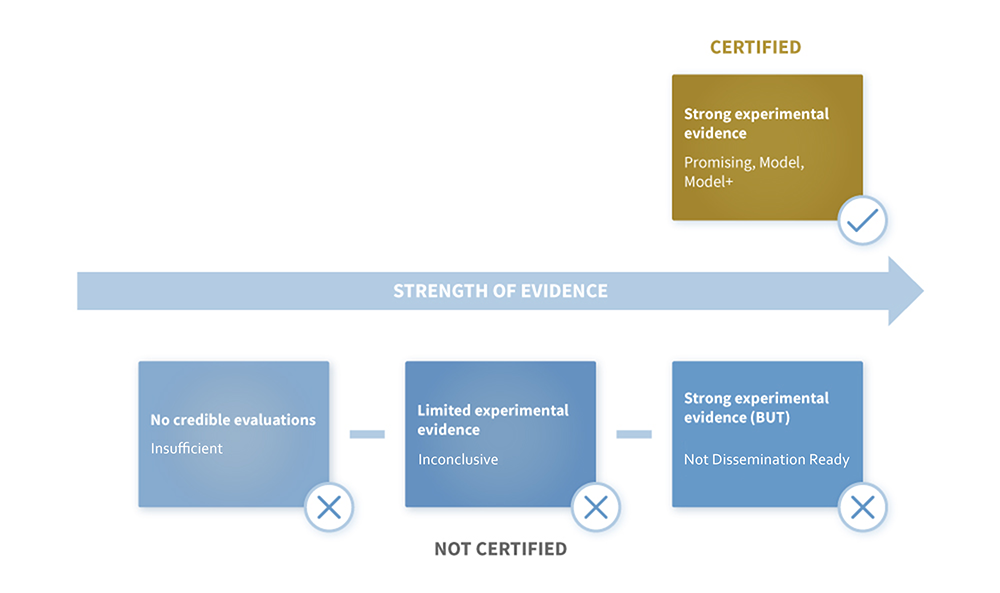
Non-Certified Programs
More than 90 percent of interventions we review do not receive Blueprints for Healthy Youth Development certification because they have not met the rigorous Blueprints criteria.
To provide more detail on the reasons for non-certification, Blueprints uses evidence ratings for non-certified programs, which consist of two main categories: inconclusive and insufficient. The internal staff typically assigns these ratings for non-certified programs based on their evidence review, but in some cases the advisory board makes the final determination.
Blueprints uses one other quite different category for non-certification. “Not Dissemination Ready” refers to programs that meet Blueprints criteria for the strength of evidence as determined by the advisory board but are not ready for adoption by users.
As illustrated below, Blueprints ratings are based on the strength of evidence for a program. The Reasons for Non-Certification page offers more detail on how the strength of the evidence is determined.
The rating for non-certified interventions is on a continuum. All interventions in our database are provided a rating based on the classification system below.

Rating system for non-certified interventions
Rating system for non-certified interventions
Below you will find the various classifications for how Blueprints rates non-certified interventions.
– Not Dissemination Ready
Blueprints lists dissemination readiness as one of four formal requirements for certifying a program. If at least one study meets Blueprints evaluation quality, intervention impact, and intervention specificity criteria but the program is not available for use, the program is rated as “Not Dissemination Ready” and listed on the non-certified page of the registry.
– Inconclusive Evidence
Studies of the intervention have one or more of the following limitations, including issues related to measurement or analysis, such as missing information on attrition, no tests of baseline equivalence, and/or only testing a very small or specialized sample. This rating is also given to programs for which there is only one quasi-experimental study that meets Blueprints evaluation quality standards (Blueprints certification requires one randomized control trial or two quasi-experimental design studies that meet Blueprints evaluation quality standards).
– Insufficient Evidence
Studies of the intervention have substantial limitations related to the evaluation design, measurement, or analysis, such as limited or no matching of the control group to the treatment group, no intent-to-treat analysis, incorrect level of analysis (i.e., not adjusting for clustering when the cluster was the unit of assignment), and/or no independently measured behavioral outcomes. Studies of a program rated as insufficient demonstrate one or more of these methodological limitations and may also include one or more limitations listed as inconclusive evidence.
Want to know why interventions fail to meet Blueprints standards? Learn more about the reasons programs are not certified.